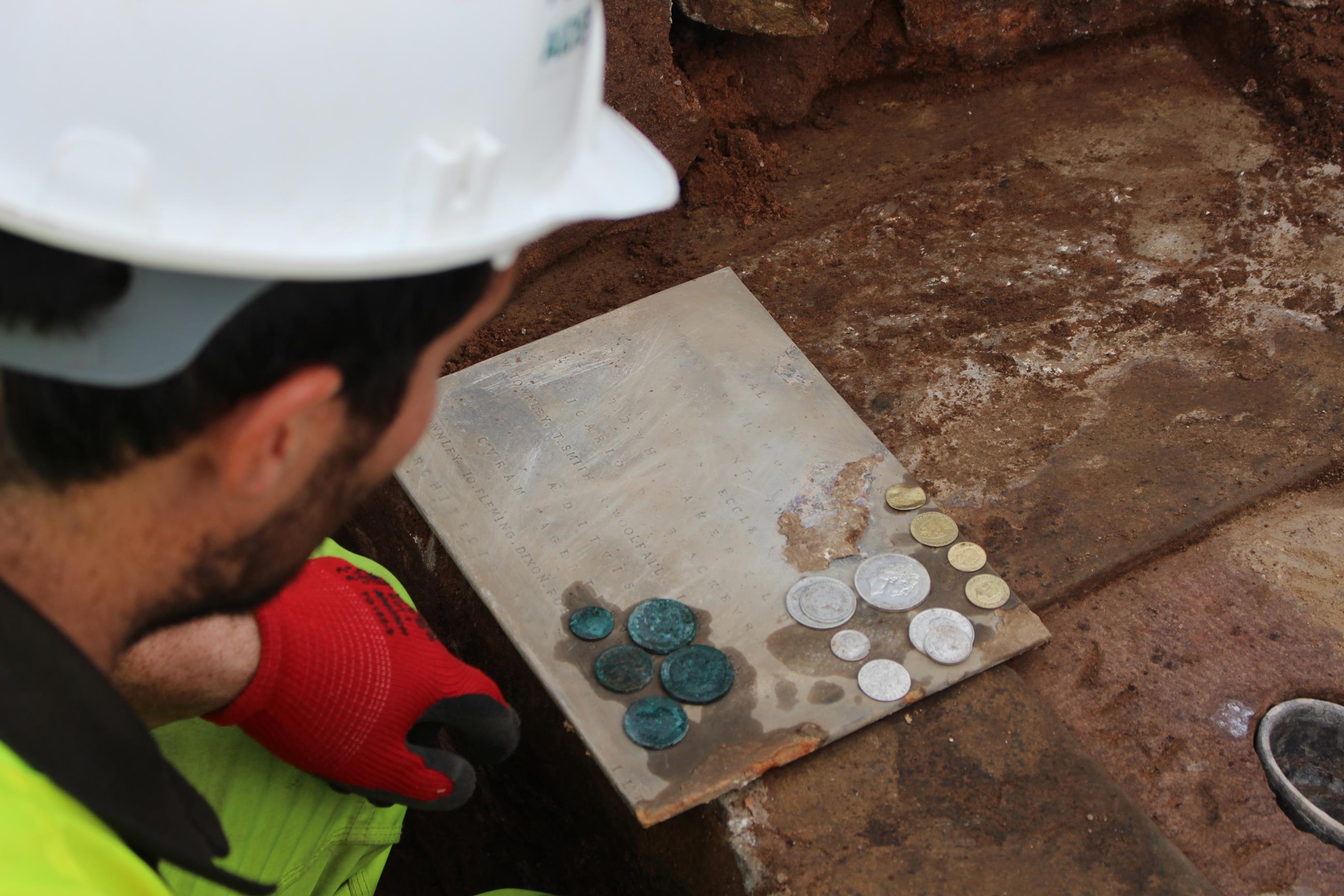
26 Jan Excavations at St Peter’s Burial Ground, Blackburn
In summer 2015 we had the rare opportunity to excavate St Peter’s burial ground in Blackburn. Headland was commissioned by Capita on behalf of Blackburn with Darwen Borough Council in advance of the construction of the Freckleton Street Link Road in Blackburn.
St Peter’s burial ground was opened in 1821 and saw intense use until around 1860, although some burials continued in existing family plots as late as 1945. Headland’s work included the recording and removal of visible memorial stones; sensitive exhumation of around 30% of the burial ground; the full excavation of the foundations of St Peter’s Church; and a package of civils work to prepare the site for road-building.
Site work began on the 29th of June and lasted for 16 weeks. An integrated team of up to thirty-five archaeologists, surveyors, osteologists, exhumation specialists, and civil engineers had to work in close collaboration to complete the excavation safely and on time under often challenging ground conditions.
Key findings included:
- 176 memorial stones were fully documented, recorded three-dimensionally and moved to a safe part of the site.
- The documentation has already produced interesting statistics about the parishioners buried here, including the most common names – Elizabeth and Mary for girls, John and Thomas for boys.
- There are also indications that one of the individuals was a soldier injured in the Crimean War, and may even have been treated by Florence Nightingale.
- The church was built in 1819-1821 and would have seated 1,500 parishioners. It became dilapidated in the mid-20th century and was demolished to ground level in 1976.
- The excavations uncovered the ceremonial corner stone at the base of the foundations, in which a small time capsule was found. The time capsule contained a single example of each of the sixteen coins in circulation at the time of construction, and may be one of the only examples in the UK recovered from a church of this period.
- Colourful glass beads and jewellery were also found in several plots.
- In total, 1,967 individual burials were exhumed during the excavation of around 400 burial plots. Each was carefully cleaned, documented and recorded 3-dimensionaly, before being lifted, and assessed. Around 800 of the bodies were children aged less than 6 years old.
- No archaeological evidence was found for any human activity pre-dating the construction of the church.
- The Bishop of Blackburn will hold a memorial service this summer and re-burials will take place in a different area of the graveyard.
The site work was finished on schedule, and post-excavation assessment is now underway. The archaeological information from the excavation will be supplemented with specialist analysis, church records and documentary research, which will allow us to build up a history of 19th-century Blackburn from the perspective of a unique cross-section of the local population.



